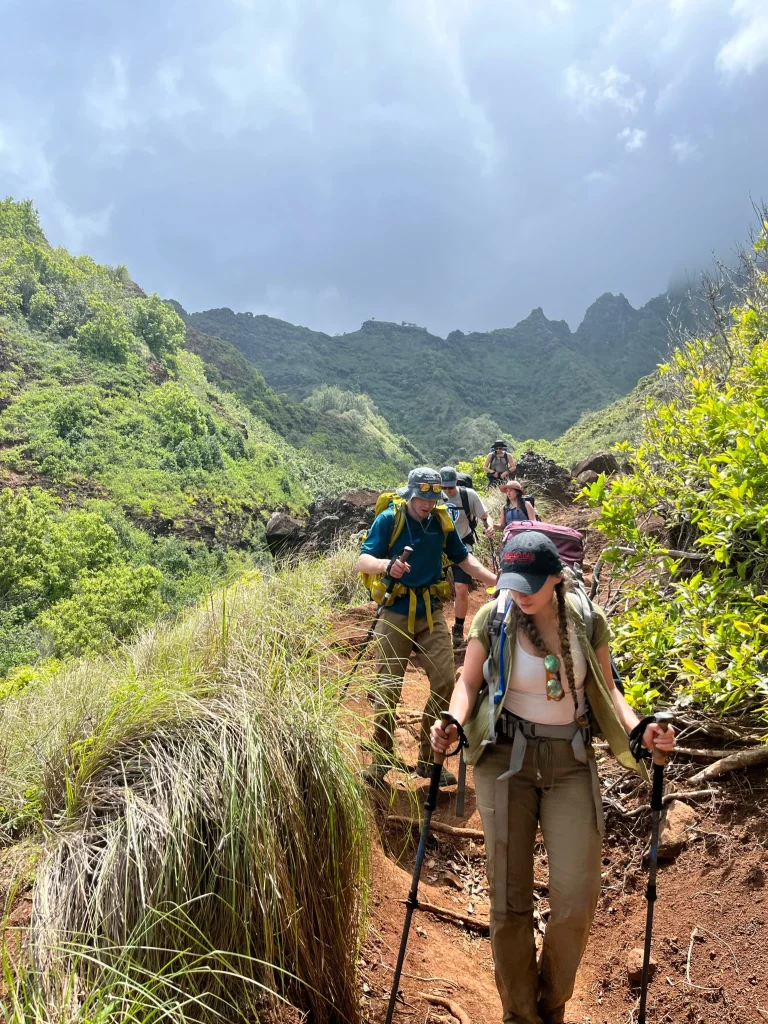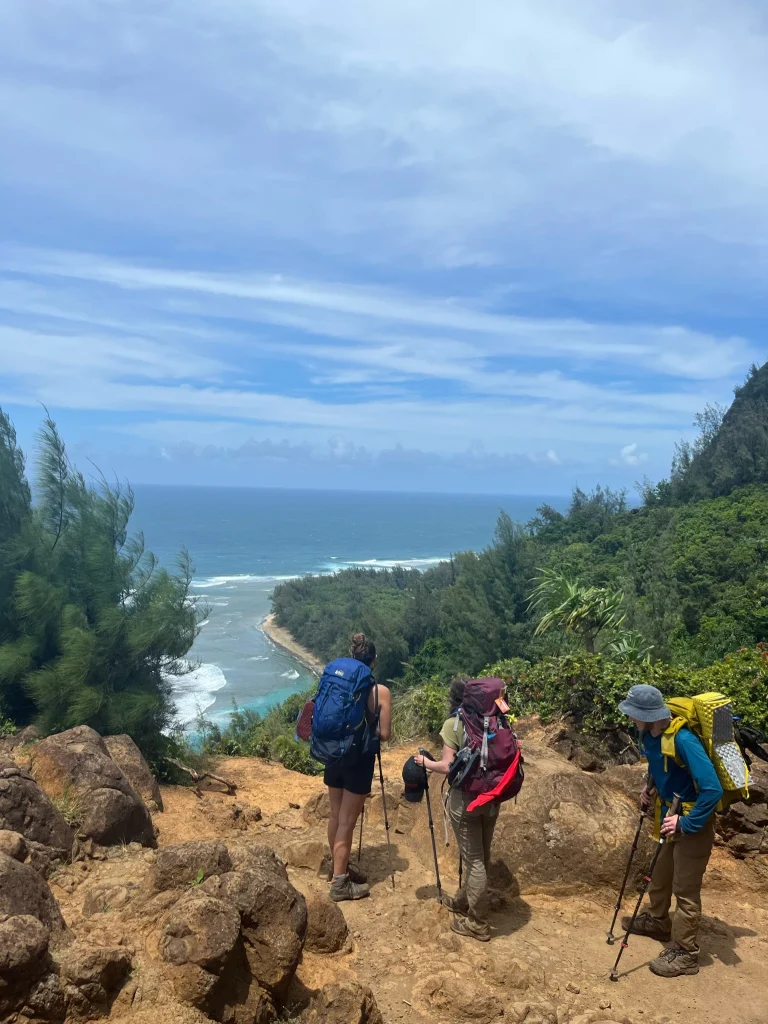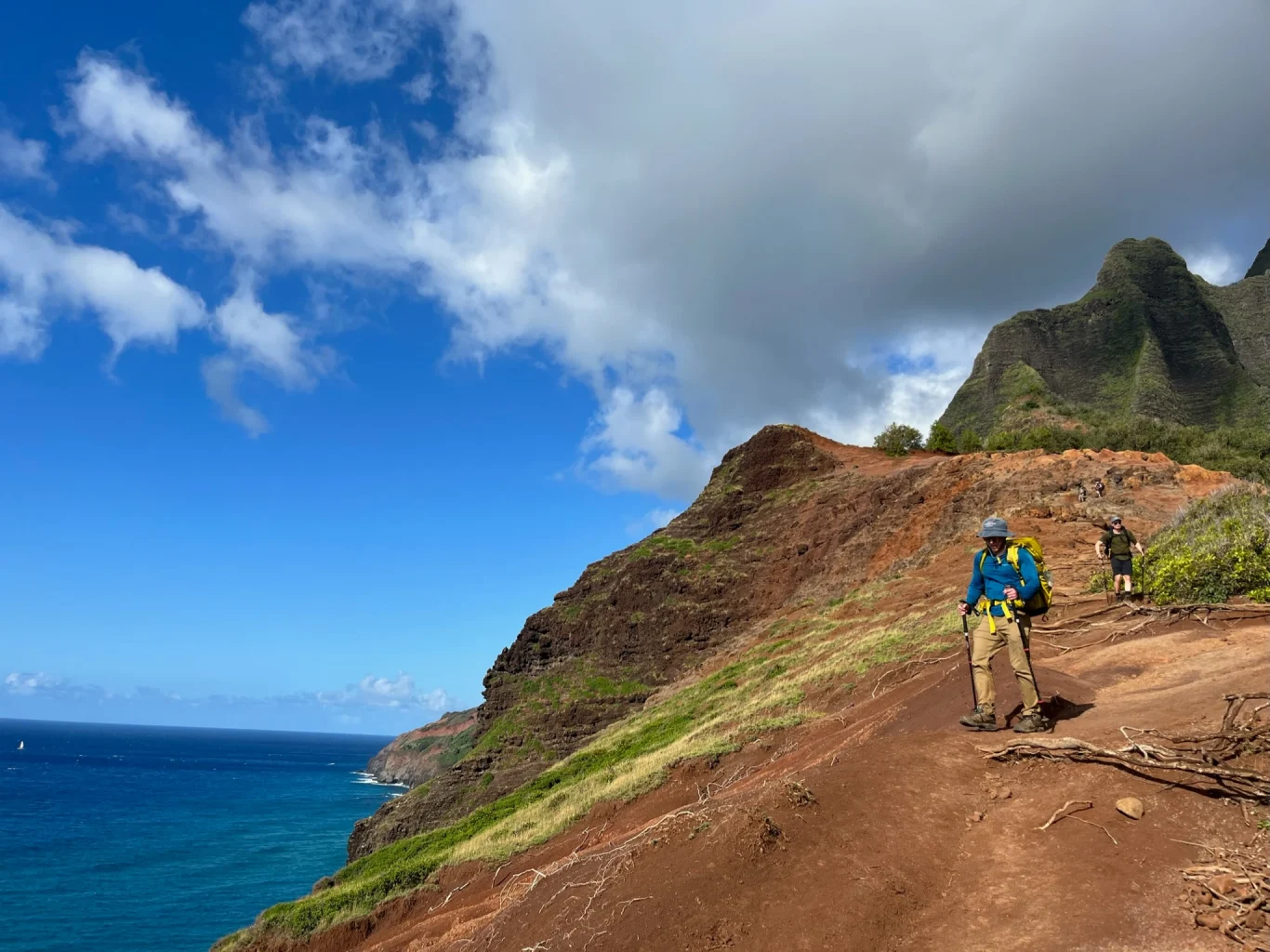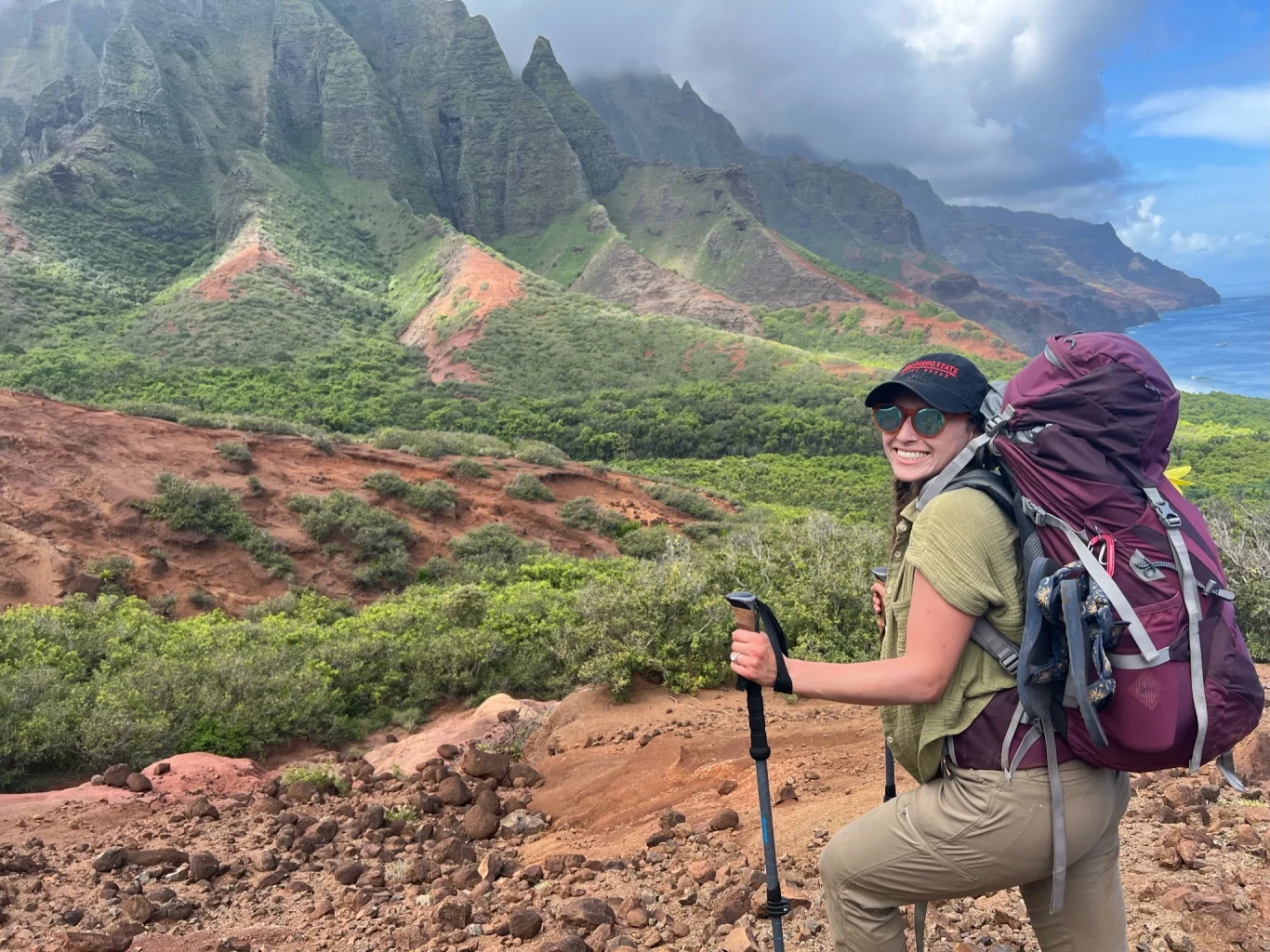A Hikers Guide to preventing injuries & recovering faster – The sun is beaming down onto your cheeks and after the winter we’ve had in the Sierra, warming you from the outside in. All the greenery catches your eye and encapsulates you with every step forward. Being outdoors, feeling the Earth under your feet is not only a breath of fresh air, but truly a cathartic experience. There’s nothing better than being out in the open nature, breathing in that crisp summer air, trekking alongside loved ones or perhaps strangers who by the end become friends. Away from the stressors of life’s to-dos and fully immersed in an alternate reality where you have not only become one with your (back)pack, but also with the mountain.
The hiking/backpacking experience is one that can oftentimes be challenging to describe as there aren’t many events that can leave you feeling just about every emotion in the book, all at once. In the beginning, you have a rush of adrenaline, sense of pride for the obstacles that lie ahead. Excitement to be disconnected from your day-to-day and re-connected with some of the precious people and environments that you may subconsciously take for granted when you’re in your weekly grind.



About mid-way through is when the silence & focus settles in; you’re getting tired, watching each step carefully, realizing the weight of your backpack has become part of your body–almost to the point where you barely notice it’s even there. You’re so used to this motion. This is the pivotal point where the excitement has run its course and you’re starting to feel those small aches and pains kick in with every down & uphill battle that arises.
Nearing the end of a long hike is when you are just about ready to throw in the towel rather than take one more step, but all you keep telling yourself is “one foot in front of the other.” Your body is so accustomed to this repetitive movement, while at the same time with each step you’re hauling cement. This is the moment where you have to choose (mentally) to persevere.
If you’ve ever done a hike or backpacking trip, you know these progressive feelings. These are inevitable, but what if you could make your hiking experience more enjoyable, less strenuous and end it ready to take on the next mountain?
Well you know how the saying goes, “where there’s a will, there’s a way.”
In this article we are going to discuss key training for injury prevention, faster recovery and the major components of integrated training and how such a program can support you on your upcoming hiking and/or backpacking trip.

- What is an integrated training program/Importance of an integrated training program to prevent injuries and recover faster when they happen
An integrated training program is one that includes strength/resistance, cardiorespiratory, mobility, flexibility, and balance/core training on a weekly basis. Think of this as a holistic program incorporating all major components of muscle and joint movement patterns into a weekly routine. By engaging in not only an active lifestyle, but a weekly routine that allows the body to train with different modalities and intensities, you will enhance your overall capacity to perform better in your activities of daily living and outdoor adventures.
As a fitness professional and avid outdoor enthusiast, I can speak from personal experience and the success of my clients that an integrated training program can completely change the way you think and act about your exercise. By training in these various movement patterns, planes of motion, and intensities, you can improve your body’s effectiveness to take on a variety of rigorous hiking terrain and with more ease, confidence & comfort. Studies have shown, when training in this fashion, the musculoskeletal, cardiovascular and neurological systems are all at work to adapt the body to the imposed demands and call on the correct muscles to initiate movement.
Incorporating such a program into your workout routine may not look all that different than what you currently do. Perhaps you focus on cardio training, so incorporating more strength and resistance days into your routine would be beneficial in reaching your fitness goals, preventing injuries, falls and joint pain, as well as prepare you for the strenuous uphill & balance battles on your next trail. Take on those steep climbs and stream crossings like it’s any old walk in the park! Adding in targeted stretching, mobility and balance work into your warm ups and workouts will increase your ability to perform better in your cardio & strength training sessions, as well as move more freely, without pain in your outdoor & daily activities. When it comes to preventing injuries and recovery, there are a few components of the integrated training model that will directly support these areas, which we will get to next.
- Mobility & strength training for injury prevention
- What is mobility training/what it supports
Mobility training has somewhat become a buzz word in recent years as the health and fitness industry has turned from “fitness has to do with vanity” to “it’s about how you feel and what you’re able to do.” People have become more aware and forward thinking with their fitness and how it relates to their quality & duration of life.
First up, we are talking about injury prevention. Living an active outdoorsy lifestyle comes with great responsibility– if you have your health & safety in best interest that is. Let’s presume that you do and you’d like to maintain this lifestyle you have as you age. That means being able to continue exploring the outdoors without your knees giving out on you, taking on greater & longer treks with ease & not having to give up your passion for adventure because of pesky joint pain.
*Strength and mobility training walk into the room.*
You may already know that strength training is the fundamental practice to support increased bone density and muscle adaptation. However, did you know that in order for your body to move freely without pain or discomfort, you’ll need to incorporate some mobility training as well?
Mobility training, or the ability of a joint to move through a range of motion, is often misunderstood and forgotten amongst the general population. This training style can also be mistaken with flexibility training, which is the ability at which a muscle can be lengthened. The two go hand in hand and support one another, but there are distinct differences. We will save that for another day, in the meantime here is a short clip debunking mobility.
I like to think of mobility training as a form of strength training as using resistance strengthens your bones, muscles, ligaments and tendons, which support all joints in the body. Mobility is what allows the joints to move without pain or discomfort, in correct movement patterns.
Without good mobility, a limited range of motion, your body may start to develop improper movement patterns, such as performing a bodyweight squat and your heels start to come off the ground or feet turn too far outwards. We see this commonly when muscle imbalances start to form due to weaker muscles or joints with limited range of motion lean on others to compensate and pick up their slack.
Now, don’t get overwhelmed that you need to be adding in another day to your training routine to focus solely on mobility training, though I would recommend it. Integrating targeted mobility exercises into your current weekly regimen such as your warm up & cool down exercises and as part of your regular strength training session, can suffice. So, how do mobility and strength training play a role on your treks? Only for all the reasons mentioned above! Being able to move freely and without pain on your trail will allow you to hike longer, without ‘hiker’s knee’ getting in the way of the fun. Having adequate full body strength & balance to be able to hike more demanding terrains that involve high elevation gains, a myriad of climbing up and down segments, as well as trudging through mud, will allow your hiking to carry on efficiently without copious amounts of fatigue or muscle imbalances.
- How movement speeds up recovery
So, we’ve discussed the benefits of an integrated training program in your weekly routine and the specifics of strength and mobility training on injury prevention. However, from personal experience breaking my collarbone while training Brazilian Jiu-Jitsu, some injuries you just can’t prepare for. Though I will add that having an integrated training program as part of your lifestyle will support your body’s ability to bounce back faster after an injury or make the injury less severe in some cases. So when they do happen, you need to know what you can be doing on your own time in addition to the Doc’s & PT’s recommendations, in order to recover efficiently and get back to doing what you love most–being active!
While it is very dependent on the type of injury, in most cases, movement drastically increases the rate of recovery. Why? Because increased blood flow brings fresh oxygen throughout the body and specifically to the wounded areas to support accelerated healing. The human body is somewhat of a self-repairing machine–this is most commonly seen when you cut or scrape yourself and white blood cells increase and prioritize repairing tissues and cells in the injured area. Generally after a few days of rest depending on the injury at stake, movement is encouraged in light, low impact forms to reduce inflammation, avoid muscle atrophy, loss of joint range of motion, as well as build up pain & stiffness.
No, you don’t want to jump right back onto the mountain after your most recent injury. Though, getting back into low to moderate impact movement such as walking, mobility, core, balance & resistance exercise (when & where permitted), even after a surgery can support you in getting back to your pre-injury condition much quicker without a significant loss of progress and strength. Our body’s were built to move, perform and act for us. Don’t allow a setback of an injury determine your success and outcomes moving forward. Your post injury routine will look different than what you may be used to and that is okay. Here are my greatest tips for progressing post injury as you start to get back into your exercise regimen.



Before your next hike
Now, you’ve finished your trek, you’re on top of the world. A new definition to “a sense of accomplishment” and “I can do hard things” has been induced. Over the following days, you reflect on where you absolutely crushed it, where you could have improved and what you want to do better next time. As you reflect, I challenge you to lean into integrated training as a lifestyle. Whether you’re an avid hiker, a once a year vacation hiker, or just getting started, incorporating integrated training into your normal routine can have tremendous impact on your short term capabilities as well as how you age and what you will be able to take on with your kids one day!
For more on getting started with small 10 min/day integrated training sessions you can do right from your phone and in conjunction with your current exercise routine, check out The Movement Membership. I created The Movement Membership to support people like you seeking to integrate mobility, flexibility, core & balance training into their weekly routine, anywhere you are, without needing to spend hours a week with a trainer.
Cheers to a freely moving, age defying, all mountain conquering, YOU!











